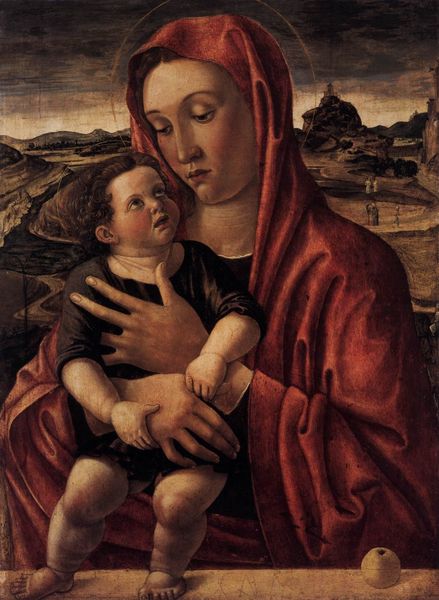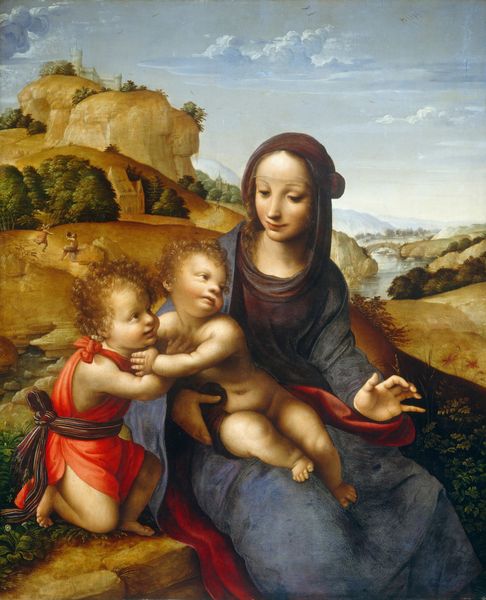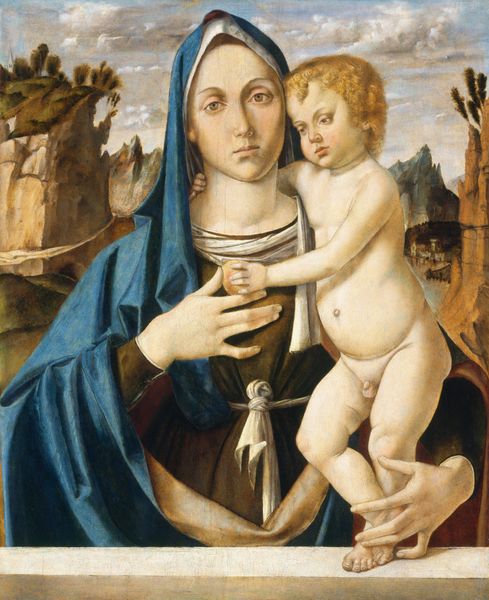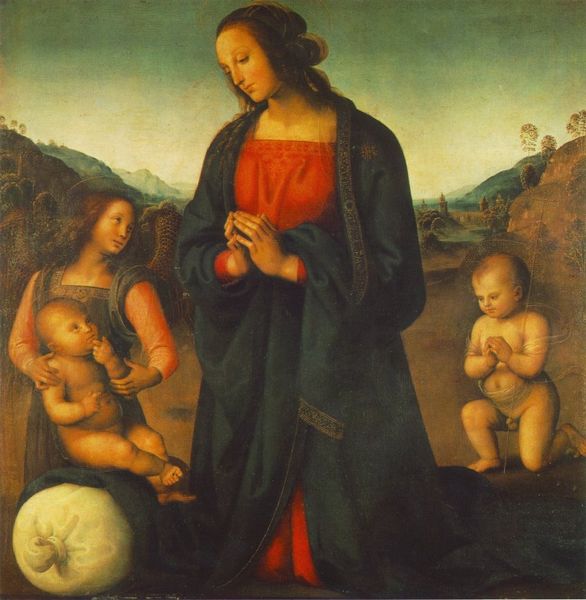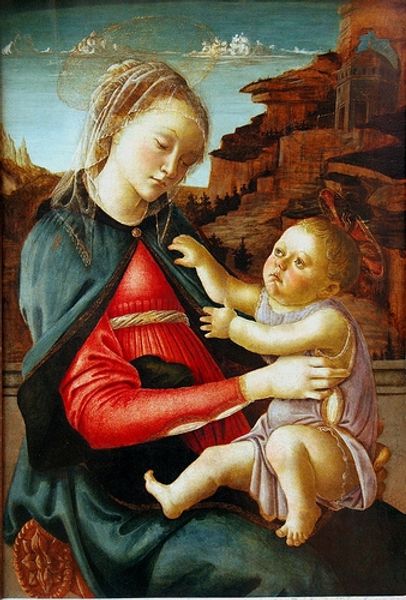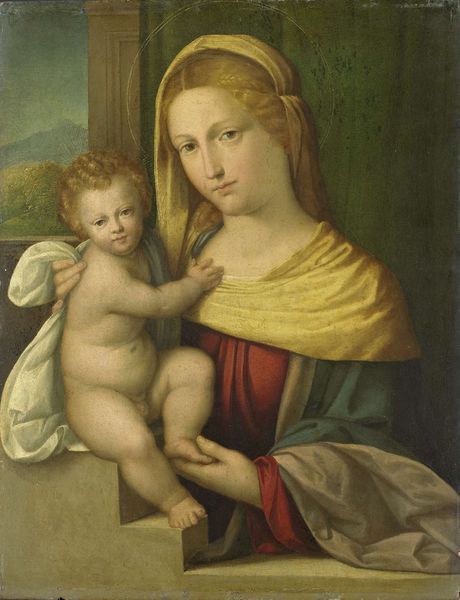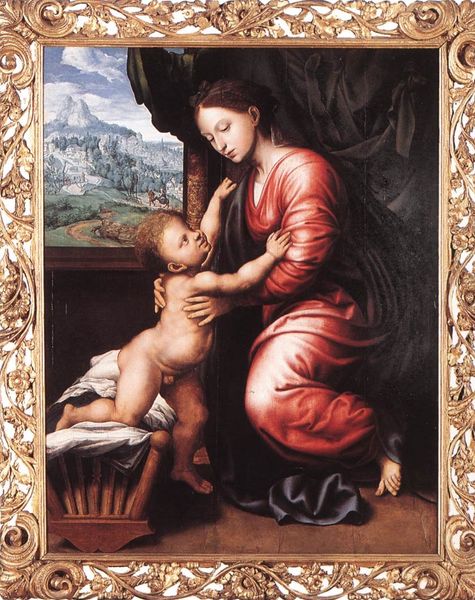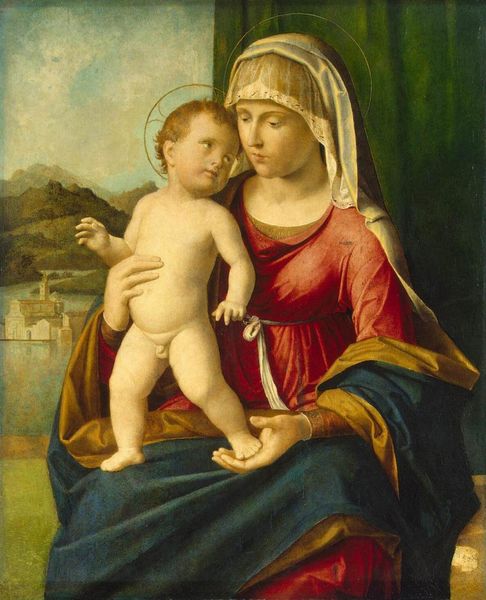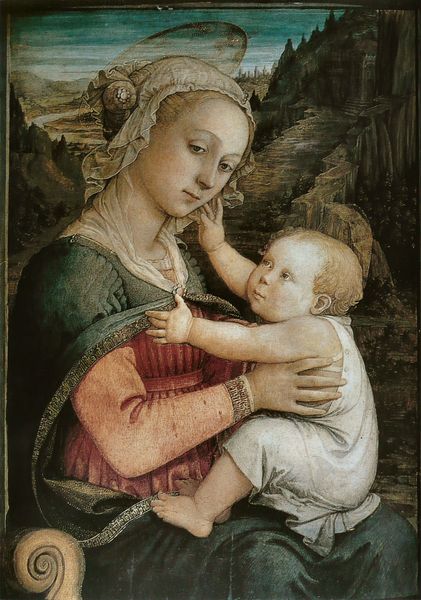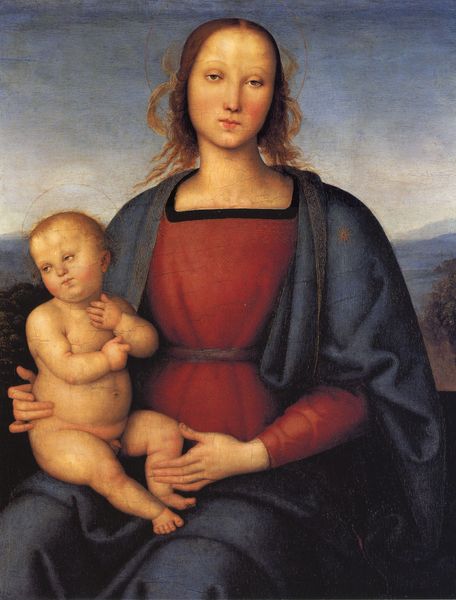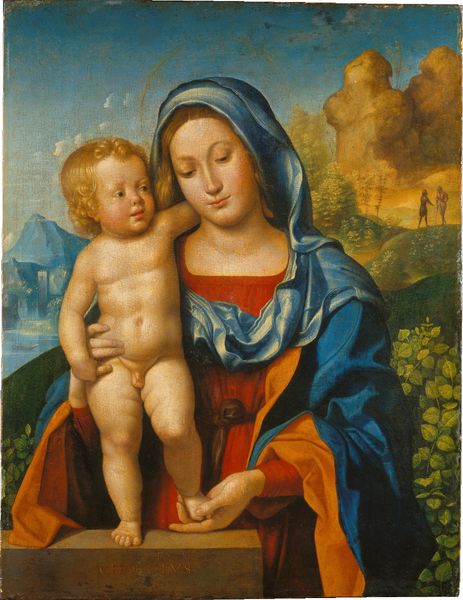
tempera, oil-paint
#
portrait
#
tempera
#
oil-paint
#
landscape
#
figuration
#
oil painting
#
christianity
#
mythology
#
history-painting
#
italian-renaissance
#
christ
Dimensions: 21.5 x 29 cm
Copyright: Public domain
Andrea Mantegna painted the "Madonna of the Cave" using tempera on wood in the late 15th century. Notice how the composition invites the viewer to contemplate the relationship between the figures and the rough landscape they inhabit. The Madonna and Child are framed by a rocky outcrop, with muted earth tones creating a sense of solemnity. Mantegna uses the formal qualities of line and texture to convey meaning. The sharp, precise lines define the figures, giving them a sculptural quality. The rocky textures contrast with the smooth skin of the Madonna and Child, emphasizing the work's humanity within the natural world. In this painting, the cave and the landscape have been interpreted as symbolic of security and divinity. The composition, with its blend of realism and idealism, elevates the human form while reminding us of the material conditions in which we exist. It's a delicate balance that challenges the way we interpret space, divinity, and the natural world.
Comments
No comments
Be the first to comment and join the conversation on the ultimate creative platform.
